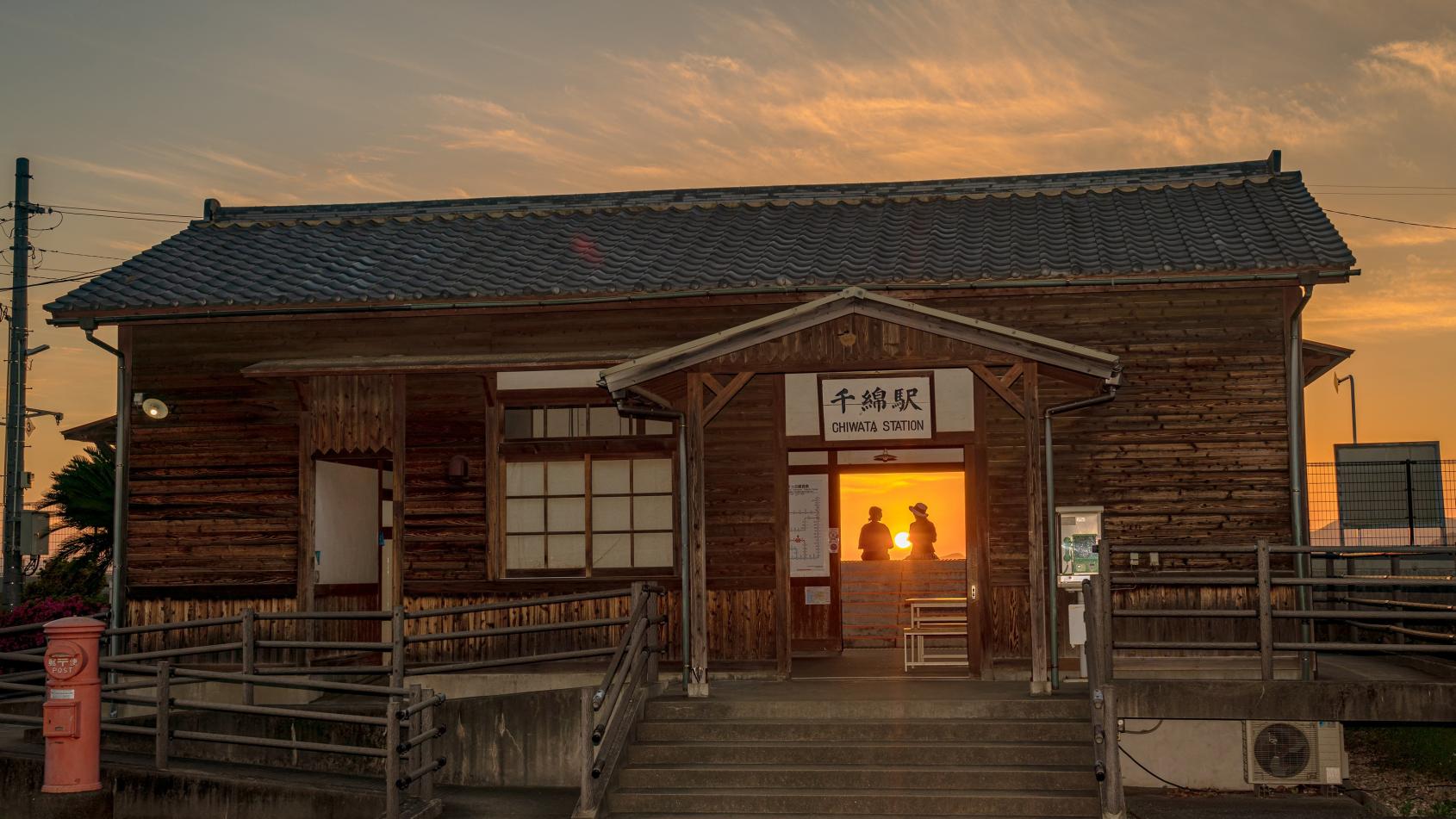 Silence: A Tour of Nagasaki City
Silence: A Tour of Nagasaki City
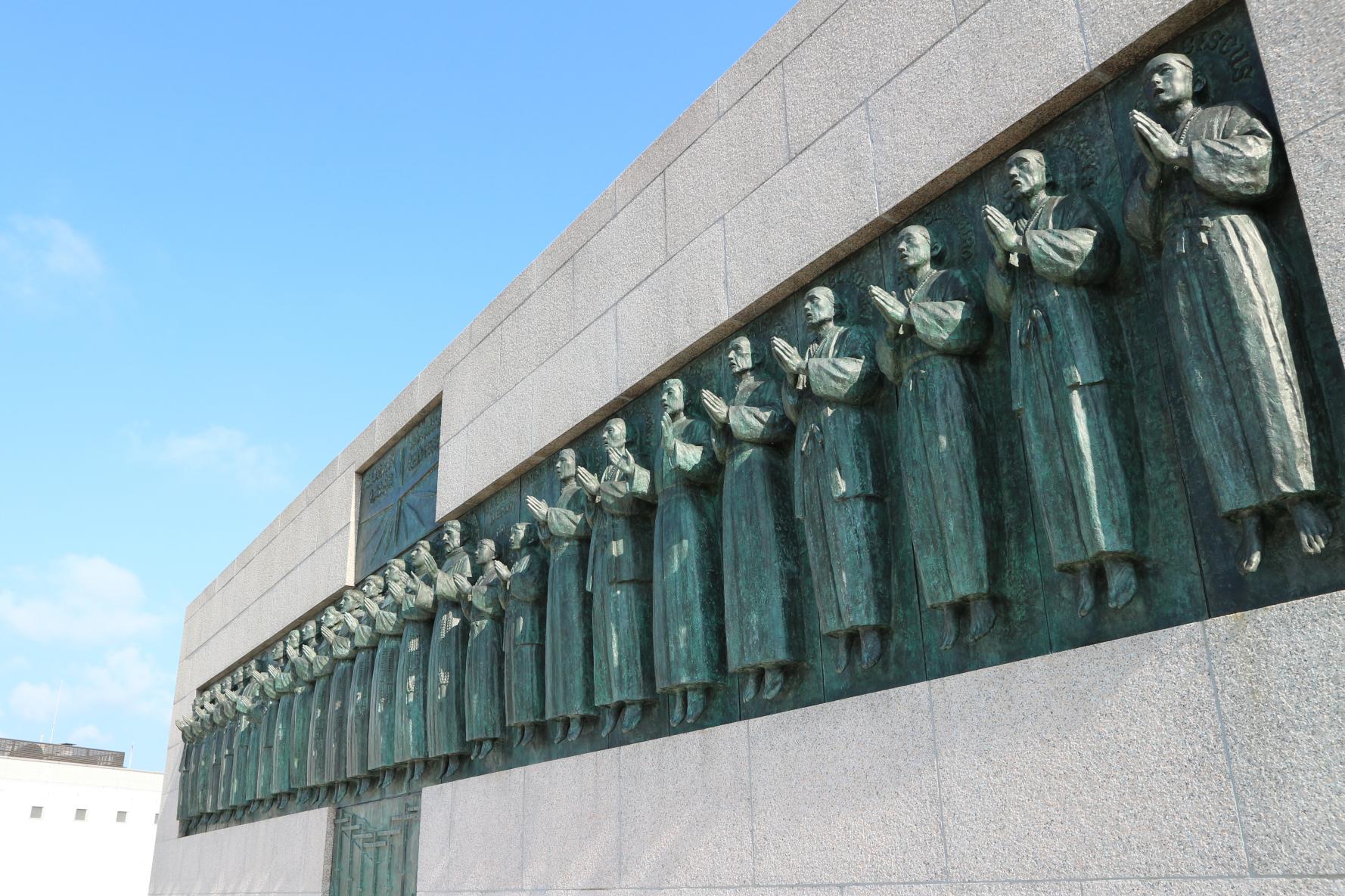
Retrace the footsteps of Endo in Nagasaki City and learn about Hidden Christian history.
- Required Time:1day
- Means of Transportation:walk
-
Print
START
Site of the Martyrdom of the 26 Saints of Japan
The sad history of the martyrdom is commemorated at this Memorial Hall
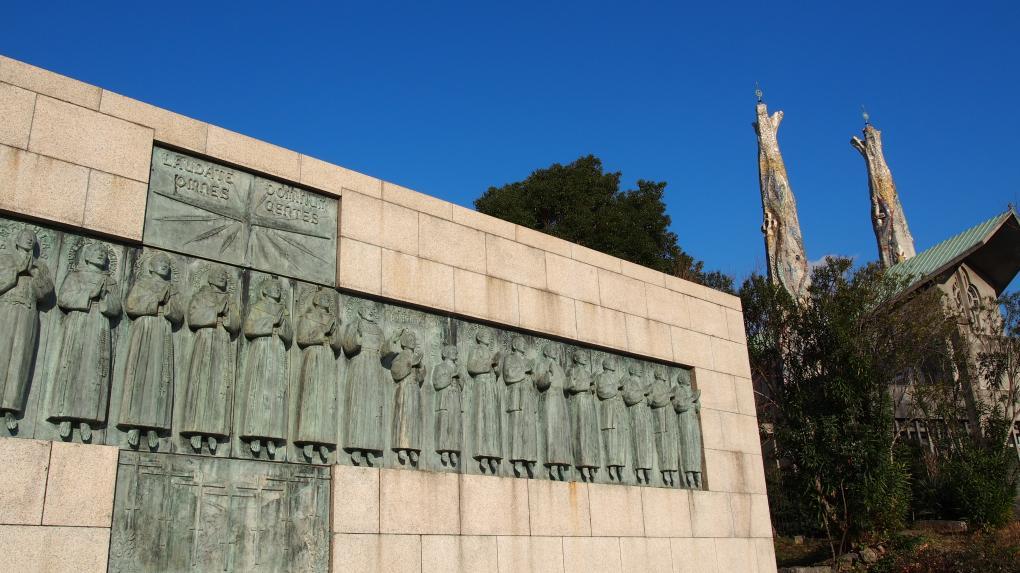
On February 5, 1597, twenty-six Catholics were executed here under the orders of Toyotomi Hideyoshi, marking the beginning of a two century long period of harsh Christian persecution in Japan. Today, this spot on Nishizaka Hill has been designated as a Japanese National Sanctuary. Pope St. John Paul II visited this site on February 26, 1981 as a pilgrim for the martyrs. Pope Francis also visited the Twenty-Six Martyrs Monument and the Twenty-Six Martyrs Museum on November 24, 2019. Before Pope Francis delivered his speech, he laid a wreath of flowers in front of the Twenty-Six Martyrs Monument, and then observed a moment of silent prayers to the martyrs.
Background
In the late 1500s, the government had begun to grow wary of foreign influence. To gain complete control over Kyushu, Toyotomi Hideyoshi issued an order to expel all priests from the country. The growing tension culminated in the arrest of six missionaries (including Spaniards, Mexicans, and Portuguese) and eighteen Japanese Christians in Kyoto and Osaka (some of whom had come from Nagasaki). They were forced to make the 800km walk to Nagasaki, chosen for its significant Christian population. They were joined by two more Catholics along the way. The journey took a month to complete, and when they finally made it to Nishizaka Hill, they were executed in front of the masses. Many more tragically followed. The martyrs were beatified in 1627, and canonized by the Pope in 1862.
The Twenty-Six Martyrs Monument
A monument dedicated to St. Paul Miki and his twenty-five companions was built at the site of the martyrdom in commemoration of the 100th anniversary of their canonization. This monument faces Oura Cathedral which is also dedicated to the martyrs.
The Twenty-Six Martyrs Museum
Behind the monument stands the Twenty-Six Martyrs Museum. At this museum, visitors can learn about the history of Christianity in Nagasaki - its rise, its prohibition, and its revival. A collection of items showcasing the lives of Christians as they hid from the authorities are on display here. These artifacts include the scroll Our Lady of the Snows (meticulously preserved by the faithful Hidden Christians in spite of the risk it posed), the "Maria Kannon" – a figurine shaped like the Buddhist Kannon used by Hidden Christians as the statue of Mary for worship, and personal belongings amongst others. There is also a collection of old maps and an original letter of St Francis Xavier's. A replica of the scroll of St. Mary of the Snows appears in the movie Silence (more information under Topics).
Twenty-Six Martyrs Memorial St. Philip's Church (Nishizaka Church)
Prominent for its uniquely designed twin towers that one may catch a glimpse of in the city area, this church, influenced by Gaudi and designed by Kenji Imai, is a church named after one of the martyrs. St. Paul Miki, St. Jacob Kisai, and St. John Goto's bones are stored here. This church is currently open for prayer and receives pilgrims from many nations every year.
| Address | 850-0051 長崎県長崎市西坂町7-8(日本二十六聖人記念館) | |
|---|---|---|
| TEL | 095-822-6000(日本二十六聖人記念館) | |
| Hours of Operation | Museum 9:00-17:00 |
|
| Closed | Museum 31 Dec - 2 Jan |
Approx. 10 min. walk
Taking a detour
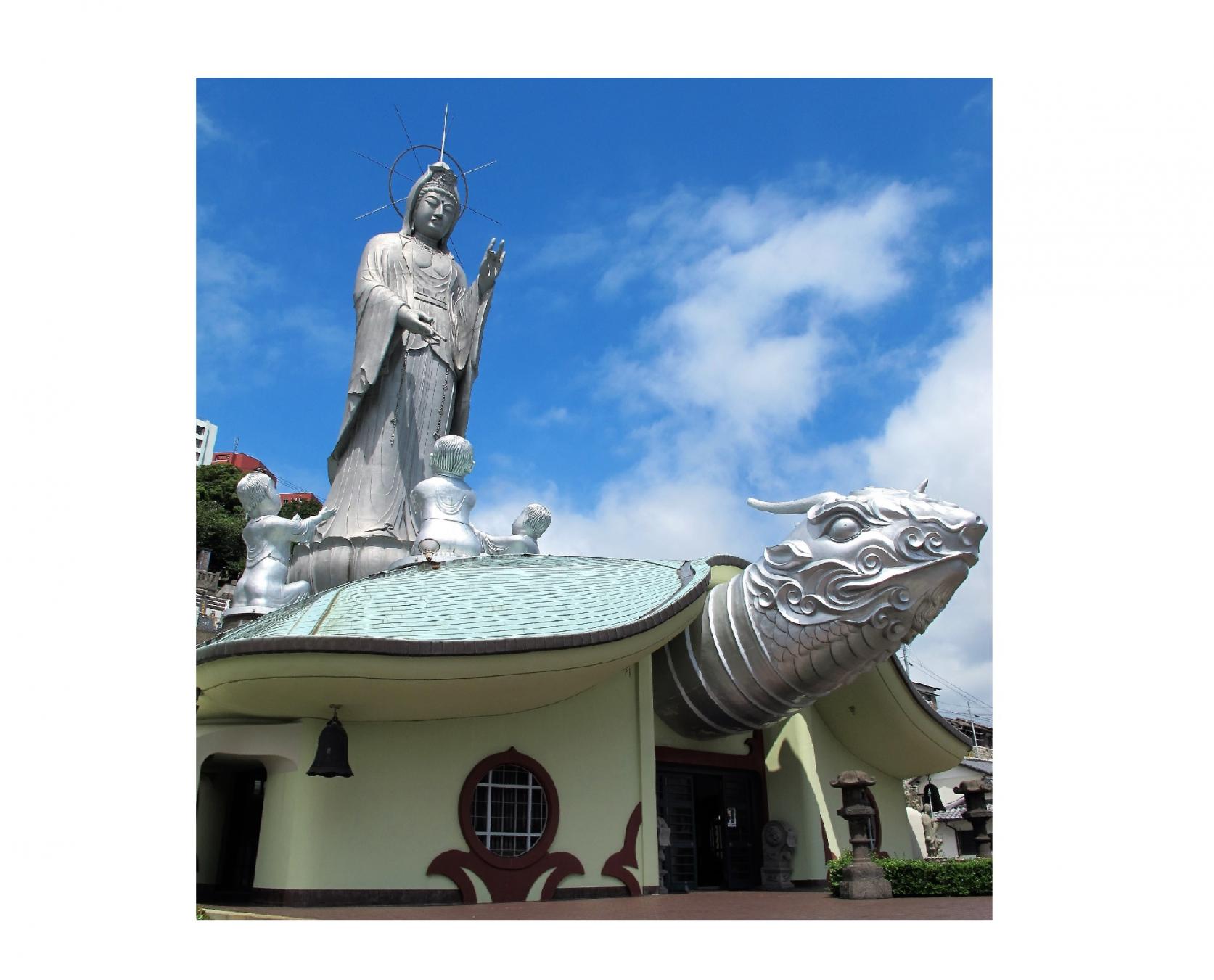
As you make your way to the next stop, make a detour and stop at Fukusaiji, one of the "four fortune temples of Nagasaki" (長崎四福寺). An impressively large Kannon (Goddess of Mercy) stands on the turtle-shaped roof of the mausoleum, overlooking the city. Shofukuji (another one of the four temples) is also along the way but our recommended second detour stop is Saishoji, next to your destination. This temple was the inspiration for the one that appeared in the movie where Rodrigues reunited with Ferreira. Endo visited this temple to view the Kirishitan Korobi Shomon scroll which had a record of Cristóvão Ferreira, the original Sawano Chuan who inspired the novel's character.
Approx. 10 min. walk
The Nagasaki Museum of History and Culture
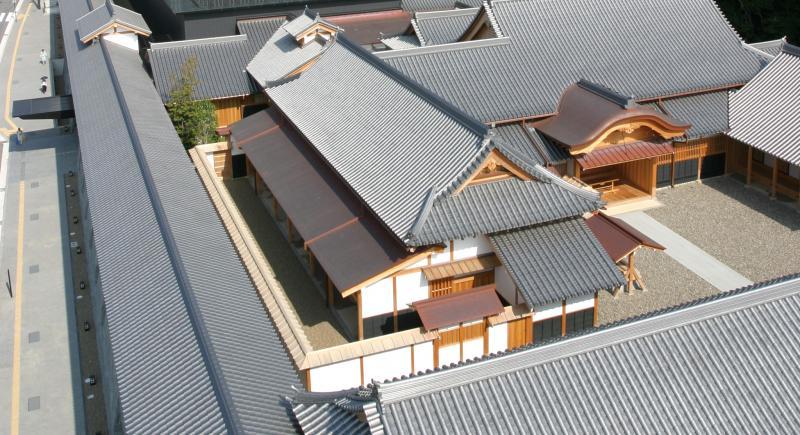
The Nagasaki Museum of History and Culture is one of Japan’s leading museums covering the story of international exchange. It has many exhibitions of precious historical materials from Nagasaki’s modern history, works of art and ancient writings. It also shows a part of the restored Tateyama branch of the Edo-period Nagasaki magistrate’s office where visitors can enjoy a short drama performance. The craft center offers hands-on classes of Nagasaki’s traditional crafts.
LUNCH AT MUSEUM RESTAURANT GINREI
| Address | 850-0007 長崎県長崎市立山1-1-1 | |
|---|---|---|
| TEL | 095-818-8366 | |
| Hours of Operation | 8:30-19:00 | |
| Closed | 1st and 3rd Monday of every month (or the following day if Monday is a holiday) and December 28-31 *Exhibition rooms may also close temporarily for maintenance. |
Approx. 15 min. walk
Teramachi-dori (Temple Street)
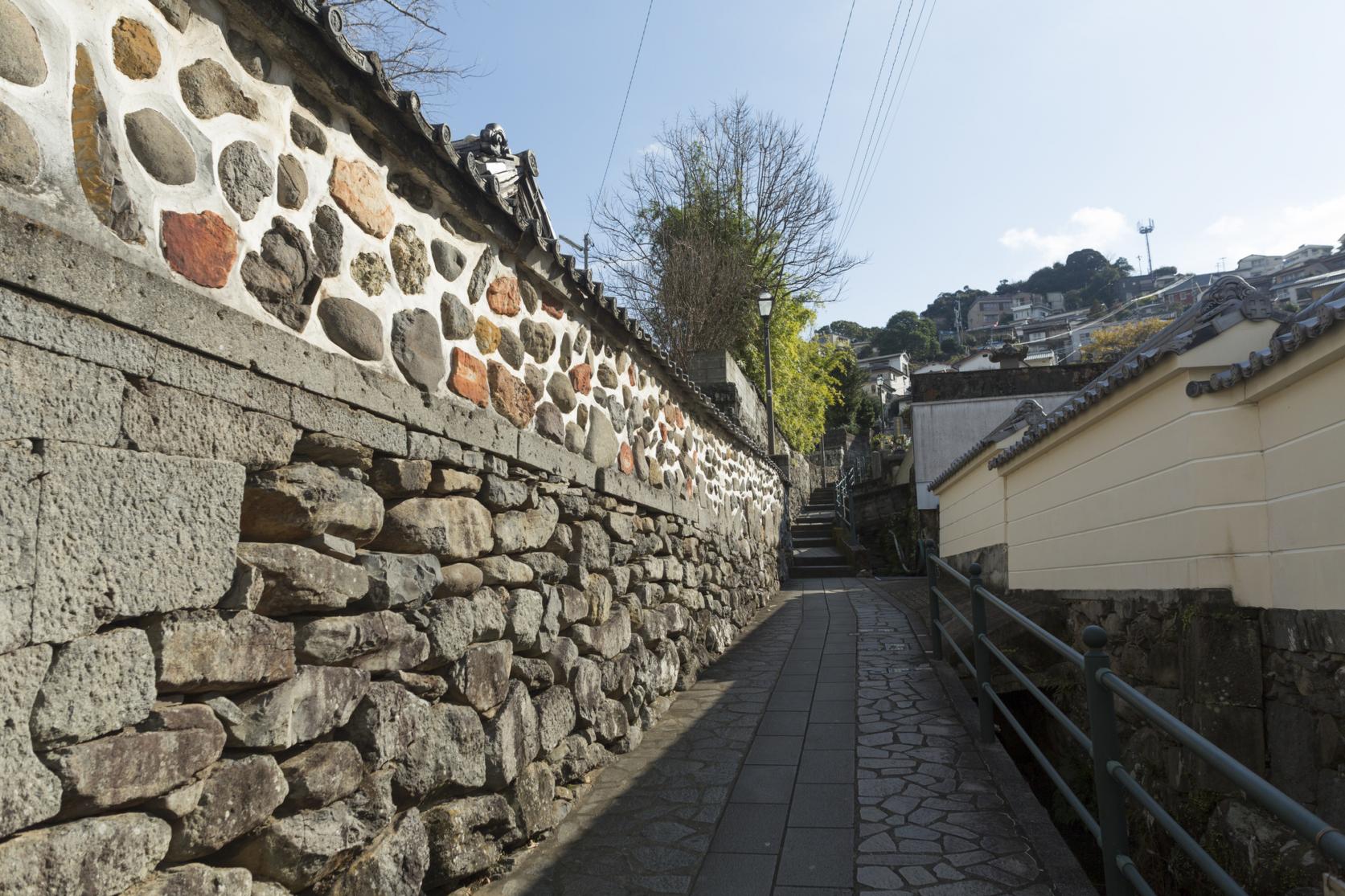
Tracing their histories some 400 years back, many old temples line teramachi-dori - Nagasaki’s famous temple street.
In the 16th and early 17th century, Nagasaki was a hub of international trade, with European and Chinese traders frequenting its ports, bringing goods from around the world. Chinese traders were the largest group and many lived in Nagasaki, establishing temples based on their hometowns. The ruling shogunate which had been tightening control over the region greatly supported Buddhism and the building of temples over the influence of Christianity, enabling Buddhism to thrive in Nagasaki.
Well-known temples along this street include Kofukuji and Sofukuji - two of the “four fortune temples” of Nagasaki. Many of these temples or their relics have been classed as cultural assets of the city or prefecture, and even national treasures.
Approx. 10 min. walk
Dejima - Site of the Former Dutch Trading Post
Japan's only window to Europe during the national isolation period.
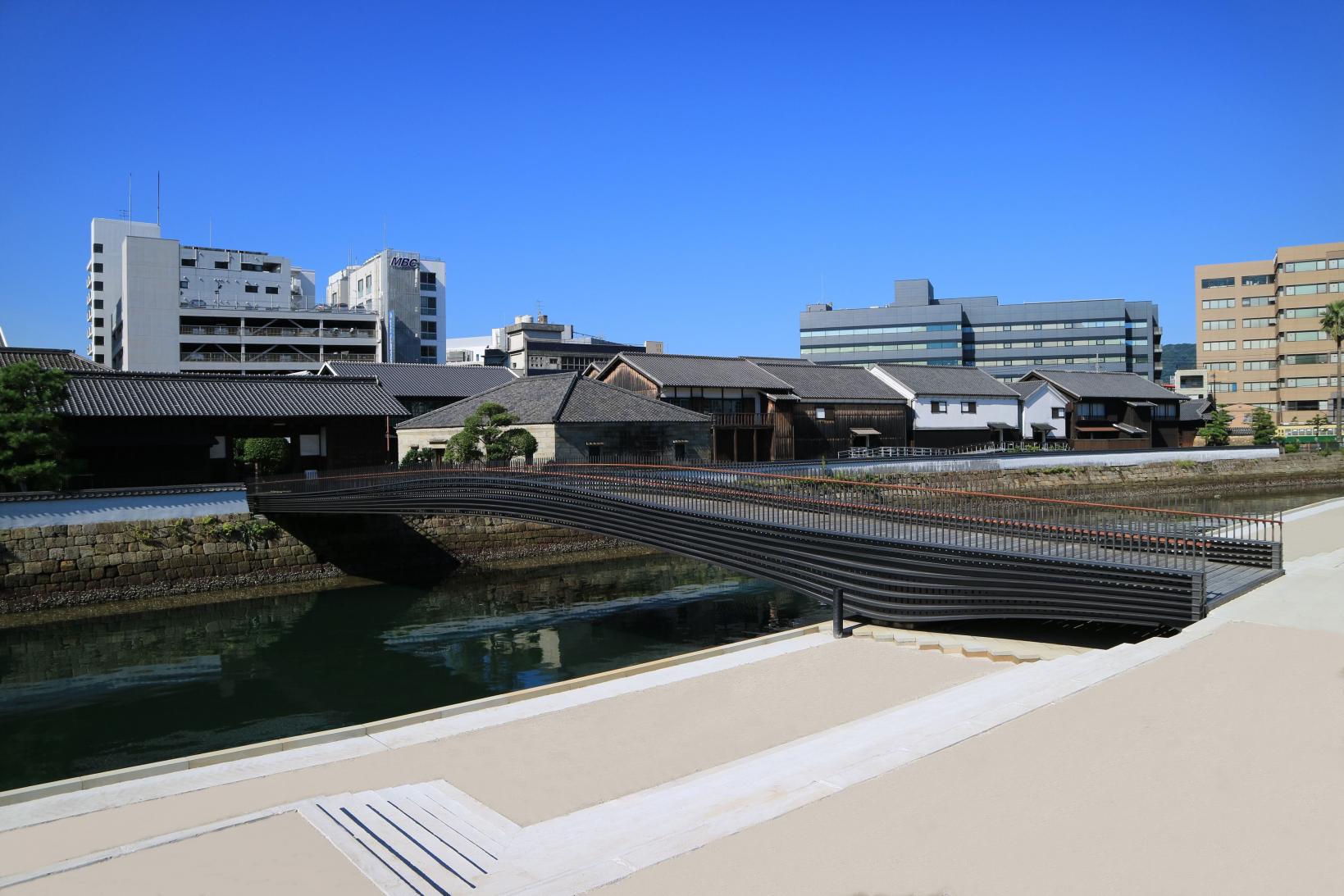
| Address | 850-0862 長崎県長崎市出島町6-1 | |
|---|---|---|
| TEL | 095-821-7200 | |
| Hours of Operation | 8:00~21:00(Last entry at 20:40) |
If you have the time, you can end your tour at the former Oura Cathedral (World Heritage Contender 2018), the first church dedicated to the 26 Martyrs and also where the first Hidden Chrisitians professed their faith. The Cathedral is near Shikairo, a restaurant where Nagasaki's representative champon and saraudon originated.
Oura Cathedral / La cathédrale d’Oura
Hidden Christian Sites in the Nagasaki Region / Les Sites chrétiens cachés de la région de Nagasaki
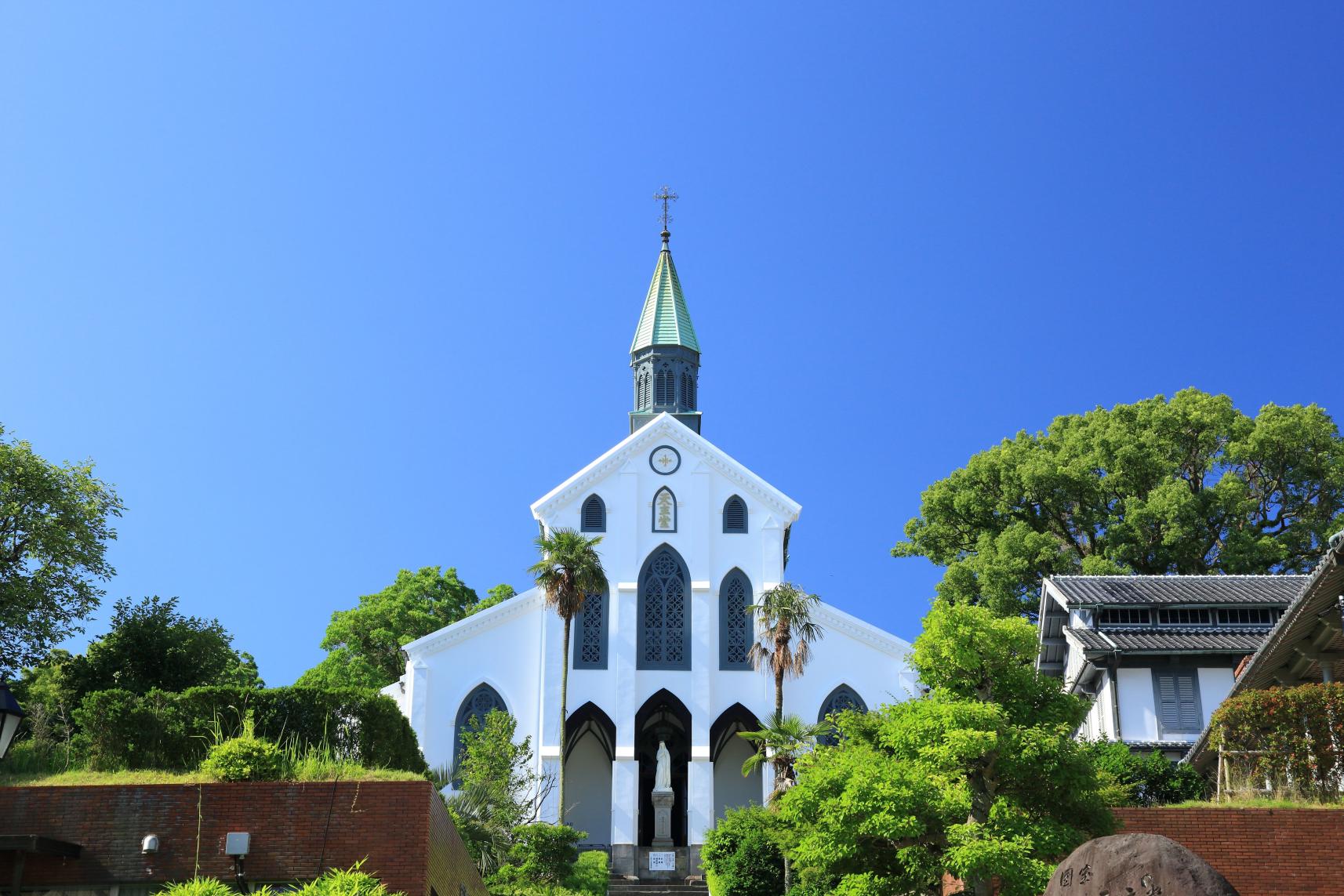
Oura Cathedral is the oldest wooden church of Gothic architecture existing in Japan. It was built in 1864 by a French missionary, and was thus known by the people of Nagasaki at the time as the “French Temple”. This church was dedicated to the 26 martyrs who had been executed on Nishizaka Hill; the bronze statues in Oura Cathedral and on Nishizaka were built to face each other. This church has been designated as a national treasure. One important story of this church is the “Discovery of the Flock”. In March 1865, hidden Christians from Urakami came to the cathedral and told the priest, Father Petitjean, that they were of the same faith as he was. When the Pope at the time heard the story of the Christian faith that had survived the centuries of harsh persecution, he was greatly moved and declared it to be the “Miracle in the East”.
Pope John Paul II visited this site in 1981.
This church was replaced with Urakami Cathderal as the Cathedral of the Nagasaki Archdiocese.
In 2016, it has been recognized by the Vatican as a Minor Basilica for its historical value.
| Address | 850-0931 長崎県長崎市南山手町5-3 | |
|---|---|---|
| TEL | 095-823-2628(大浦天主堂) | |
| Hours of Operation | 8:30~18:00(Last entry at 17:30) |
FINISH
Google Map may not be properly displayed if the volume per day exceeds the limit.



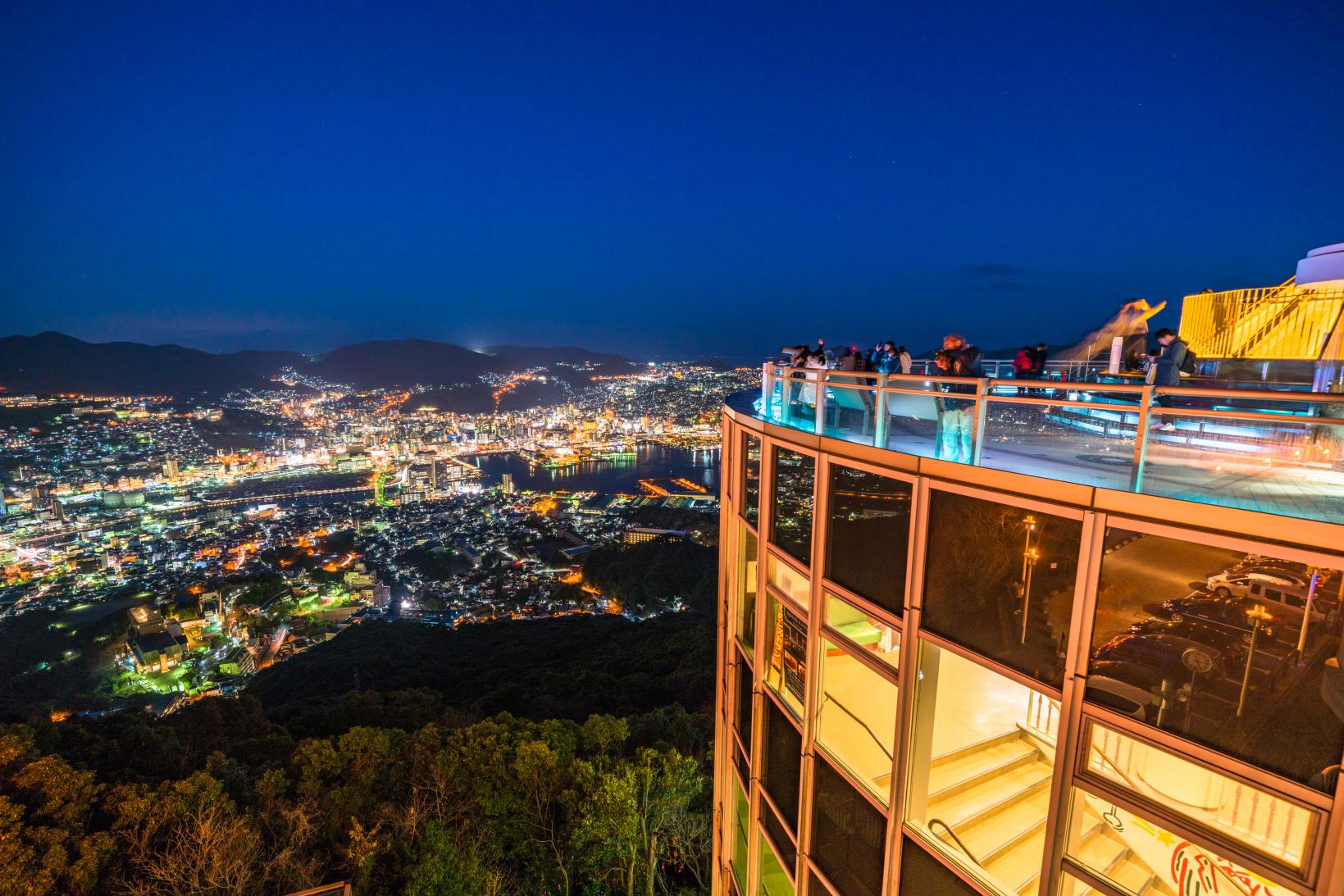
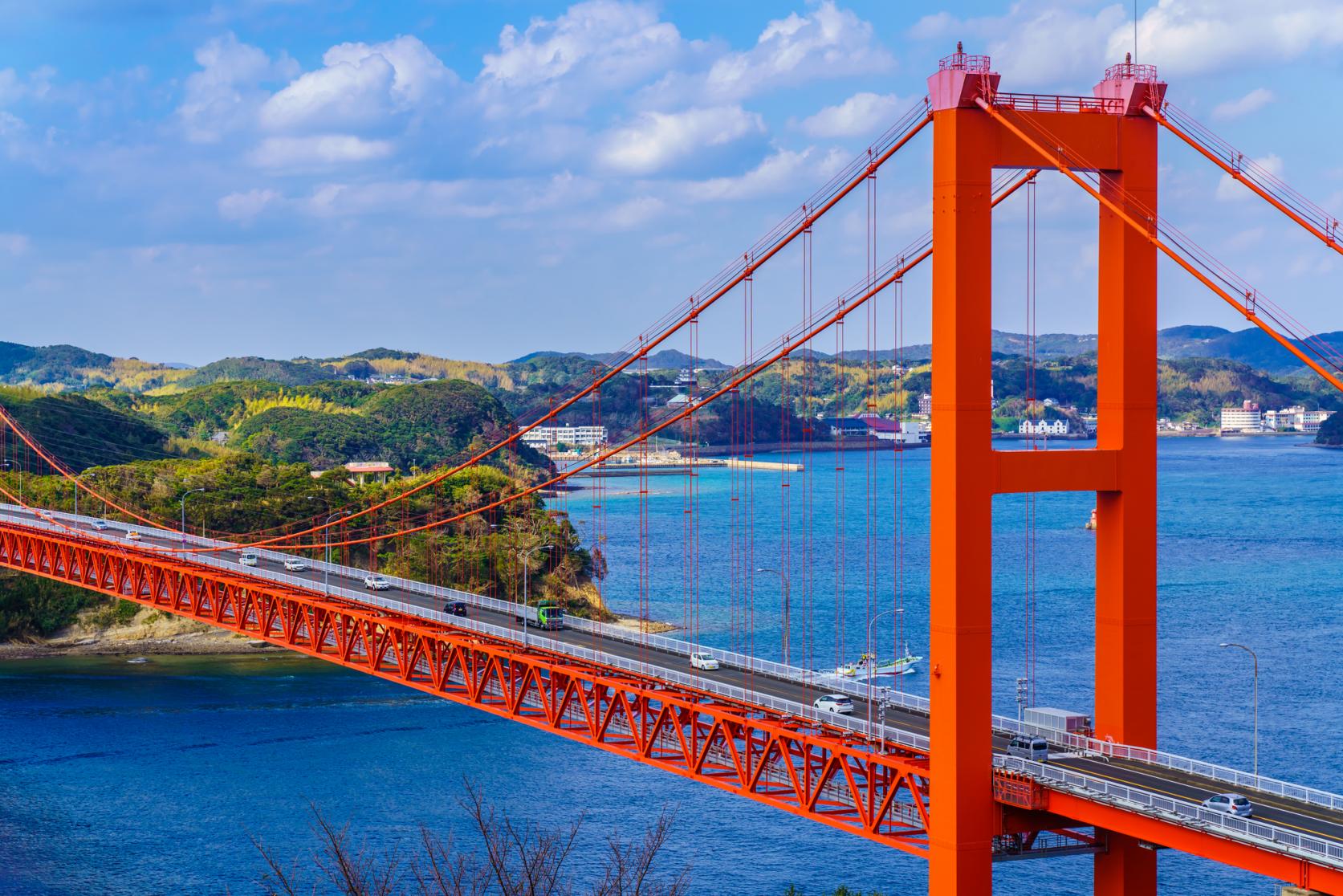
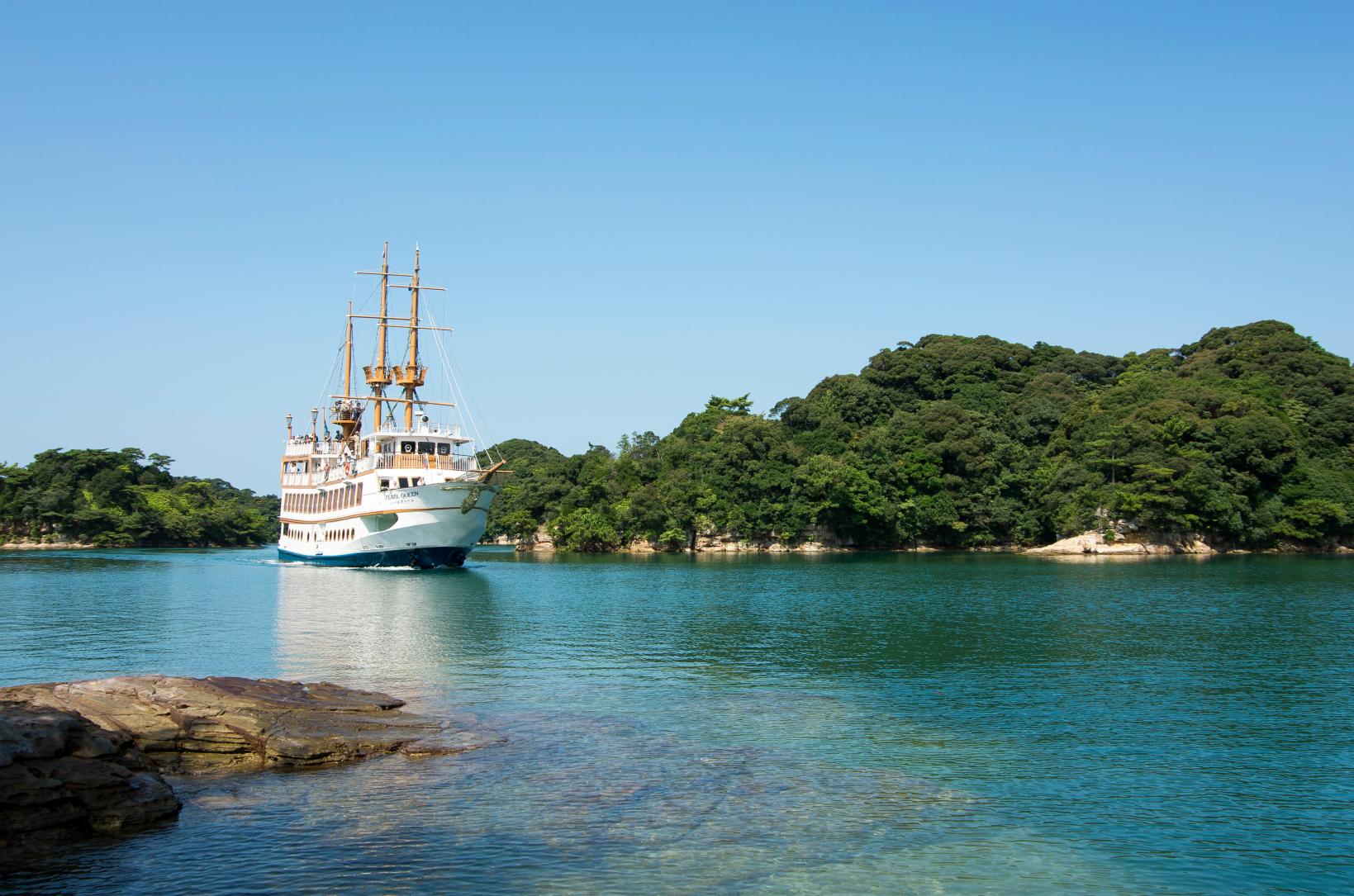
![[Starting from Kumamoto] Sightseeing in Kumamoto City & Unzen, Shimabara: A self-indulgent route around Goto-1](https://www.nagasaki-tabinet.com/storage/special_features/688/responsive_images/mQ8UXFjlMWs9jf2DJp7Ut1pIsLO7JGHPjeFlEHkc__1639_922.jpeg)
